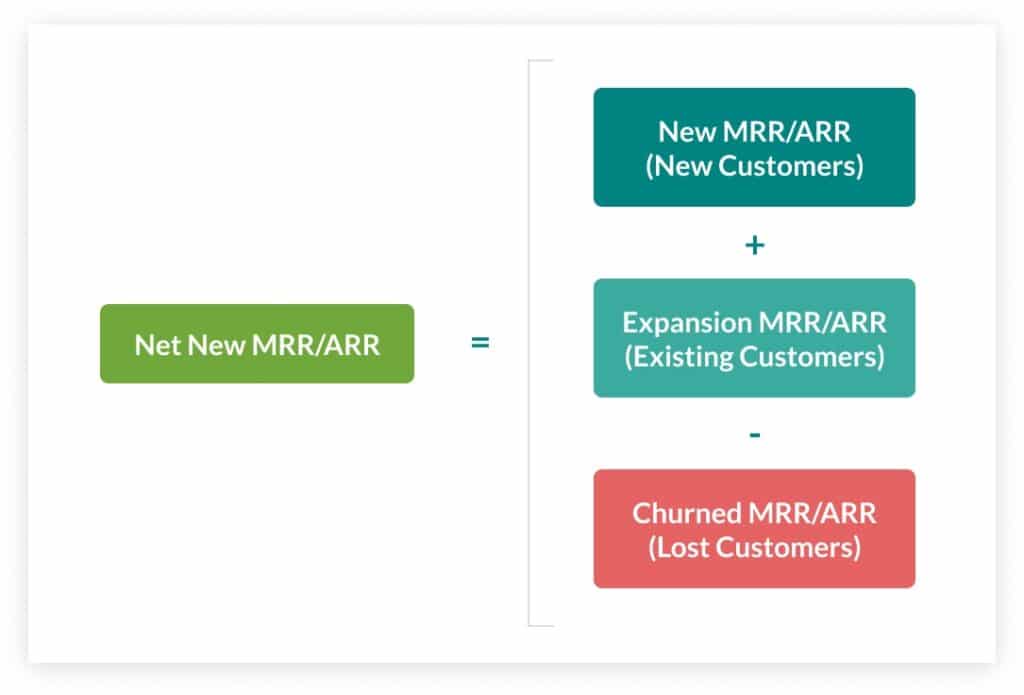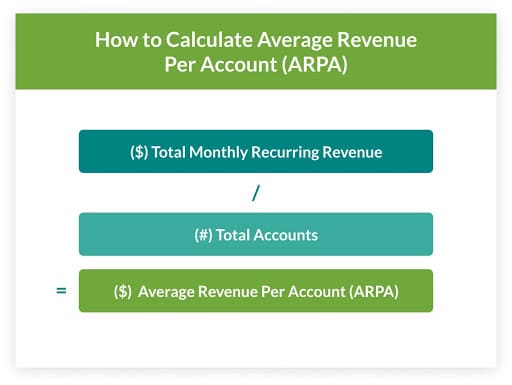SaaS Metrics to Watch When Growing Your Business
When starting a SaaS company or growing your existing business, there are several moving parts to remember. For one, the SaaS model works unlike any other standard business structure with many quirks and nuances one must be aware of when assessing the financial implications of growing the business. Furthermore, because SaaS is subscription-based, business owners need to determine the cost of customer acquisition and expansion over time— it is no easy task to assess the various factors that contribute to profit and loss, churn rates, and the overall longevity of the customer.
Below is an in-depth look at some critical factors in growing your SaaS business, which metrics are the most important to keep in mind, and how to assess them together to develop the best plan for sustained forward momentum.
What Makes the SaaS Model Unique
Unlike business models that rely on selling an item, SaaS companies rely on selling a service. As such, traditional business models relying on single-purchase clients are insufficient to sustain and achieve long-term expansion goals.
When developing a business model for SaaS companies, several metrics must be taken into account to determine not only how many new clients you are earning but also how many clients are choosing to continue their subscription to your software.
This makes the challenge of SaaS marketing twofold: you not only have to find new customers but also the right customers for your service.
Below are the top metrics to help you determine what is (or isn’t) working to grow your business.
The Basics
To make discussing these various topics easier in the future, there are a handful of key metrics to learn about. These will be the main metrics you use when calculating projected growth and financial needs and assessing valuable client information. They will help you generate more accurate leads and target the correct niche for your service.
MRR, ARR, ACV
This stands for, Monthly Recurring Revenue, Annual Recurring Revenue, and Annual Contract Value, respectively.
MRR and ARR are used when your service generates revenue using a recurring subscription. ACV is used when your service generates revenue by fulfilling contracts.

In all three cases, these metrics represent the recurring revenue of various clients or contract types. Which one you use depends mainly on the service and subscription style you provide
ARPA/ARPU
This metric signifies Average Revenue Per Account or Average Revenue Per User.
This metric becomes particularly important when offering packages or tier subscriptions as it better describes each client’s revenue value. For instance, out of 100 customers, if 10 subscribe to your top-tier product, they will hold a higher percentage of your total revenue. Identifying which clients fall into this category allows you to put more resources into retaining their business and gaining new clients with similar needs.

CAC
This stands for Cost to Acquire Client.
Generally speaking, this metric encompasses any revenue that is put into generating leads and marketing to potential clients up until they subscribe to your service.

Revenue Churn vs. Customer Churn
Churn is a term used to indicate when a client either downgrades to a less expensive tier or stops using your service altogether.
Customer Churn occurs when an individual is lost, and Revenue Churn occurs when revenue is lost associated with a given account. These are two separate categories because not all customers generate the same amount of revenue.
For this reason, Churn and ARPA go hand in hand. By assessing your ARPA and looking at the number and revenue lost by churn rates, you can determine whether your current churn rate is sustainable, is leading to a growth plateau, or will start putting your business in reverse.
LTV
This is the Lifetime Value of a client.
Here, you will factor in a given client’s ARPA and divide it by their churn rate. This leaves you with a general value for the client—i.e., how much revenue they generated over the duration of their subscription to your service.
Customer Engagement Score
Finally, Customer Engagement Scores serve as an indication of how your customers are interacting with your product. Determining how customers engage with your product helps predict the potential churn rate for a client or demographic.
For instance, a customer who does not use your service often or does not utilize all its features is more likely to churn than a client who incorporates your software into their daily workflow.
This is concrete and logical data that is used to make better assessments of what clients are in your niche. After making this assessment, you can put your resources to better use—developing and refining your marketing strategy to be more appealing to your customer base and resulting in a higher acquisition of long-term clients.
The Impact of “Churn” Rates
While all the metrics listed above work in harmony to create a comprehensive analysis of your company, churn rate is arguably the most critical metric to assess.
When determining the needs of a SaaS company, churn rates can provide valuable information on what is performing well or poorly within your product and help predict your net financial position.
When expanding a SaaS company, account and revenue churn should be tracked over time. Once this number stabilizes, factor it into your monthly profit margin to help determine how it offsets your revenue growth. This will allow you to decide whether you are acquiring and retaining customers at a steady enough rate to still draw a profit.
Note that high churn rates are never a good sign in either category. If you are faced with churn rates above 2%, it may be time to look at your software and sales process to see if the product is faulty or if you are marketing to an incorrect demographic.
Calculating Your Net MRR/ARR
Calculating your net MRR is a simple process that gives great insight into how your business is performing.
To calculate this key metric, determine a period of time you wish to examine—let’s say a month—and assess your baseline MRR at the beginning of that time. Once the month is over, re-examine your MRR by adding in any new customers, account upgrades, and other incoming revenue. Then, subtract from this figure any negative revenue, such as account downgrades, churned customers, and overall churned revenue.
Planning: Not Your Average P&L Curve
When determining the level of funding needed to expand your SaaS company, you will need to consider some quirks about start-up costs.
Unlike other businesses, SaaS often requires more front-end financial commitment than most start-ups. In fact, in the early months of growing your business, operating at a negative profit is normal (and even expected).
This is a SaaS-specific quirk: When you are beginning to grow your company, expect a greater loss margin. Companies that lean into this loss and continually reinvest their profits in the short term into sales tactics and lead generation often see larger growth down the road, even though, in the present moment, they usually need a little more funding to get the project going.
You want to recover your CAC in as few months as possible to combat this. The shorter your turnaround time, the quicker you will recover your initial expenses.
Important metrics to assess when determining the financial implication of investing in marketing to grow your client base are your LTV and your CAC. These metrics will give insight into the efficacy and efficiency of your client acquisition methods and your ability to retain them.
The Upsell: Variable Pricing
Customers and businesses alike benefit from tiered service systems. These systems allow companies to target high-paying customers while also allowing clients to get the most bang for their buck.
There are a few principles for playmaking variable pricing a logical next step for growing SaaS businesses:
It is easier to sell to existing customers than new customers
When working with SaaS, it is essential to make your service integral to the workflow needs of your clients.
Once they build your software into their routine, these customers will be far more likely to purchase more featured and advanced versions of your product that cater to their needs. This allows them to continue working with familiar platforms that provide necessary services while keeping them engaged with your services.
It increases customer lifetime and reduce customer churn rate
When customers begin to rely on your service to support their workflow, they will often stay with your company for the long haul. This means their overall LTV to CAC ratio is much lower, resulting in each client bringing in a higher profit margin than before.
It creates the opportunity for upfront payments and promotions
Finally, tiered and variable pricing allows you to offer promotions that can win upfront payment.
One popular example of such promotions is offering clients a reduced rate on a monthly service by asking for a year’s payment upfront. This will secure a lower churn rate and higher LTV for that customer and give you more funding to work with in the short term. These funds can be put toward covering financial shortages during the initial expansion process while leaving room to further invest in lead generation, marketing, and sales.
When You Need a Funding Boost
Many times, what prevents a SaaS company from reaching its full growth potential is the lack of funds to function at that initial negative profit while leads and sales are being discovered.
RevTek Capital – Providing Growth Capital
RevTek Capital provides strategic debt funding of $2MM to $20MM+ to growing companies with $5MM to $75MM of predictable annual recurring revenue. The funding is used for sales growth, acquisitions, and enhancing infrastructure for scaling operations. Each company’s debt structure is customized to optimize its unique accomplishments and circumstances.
Many startup companies struggle to raise capital and have found the process quite time-consuming. Our organization has unique insights regarding SaaS businesses and the challenges these and other tech-enabled companies encounter. In addition, the professional team at RevTek has many years of experience in marketing and operations to assist our clients.
Key Benefit Summary
- Cost-effective capital for growing tech-enabled companies
- The company leadership retains control
- Repayment is structured into simple and manageable monthly payments
- You have faster access to funding – closing in as little as four weeks
If you need capital to give your tech-enabled business the next boost it needs or need more advice on how to grow your business, please contact us at RevTek Capital today.
To learn more about RevTek Capital, please visit www.revtekcapital.com.


